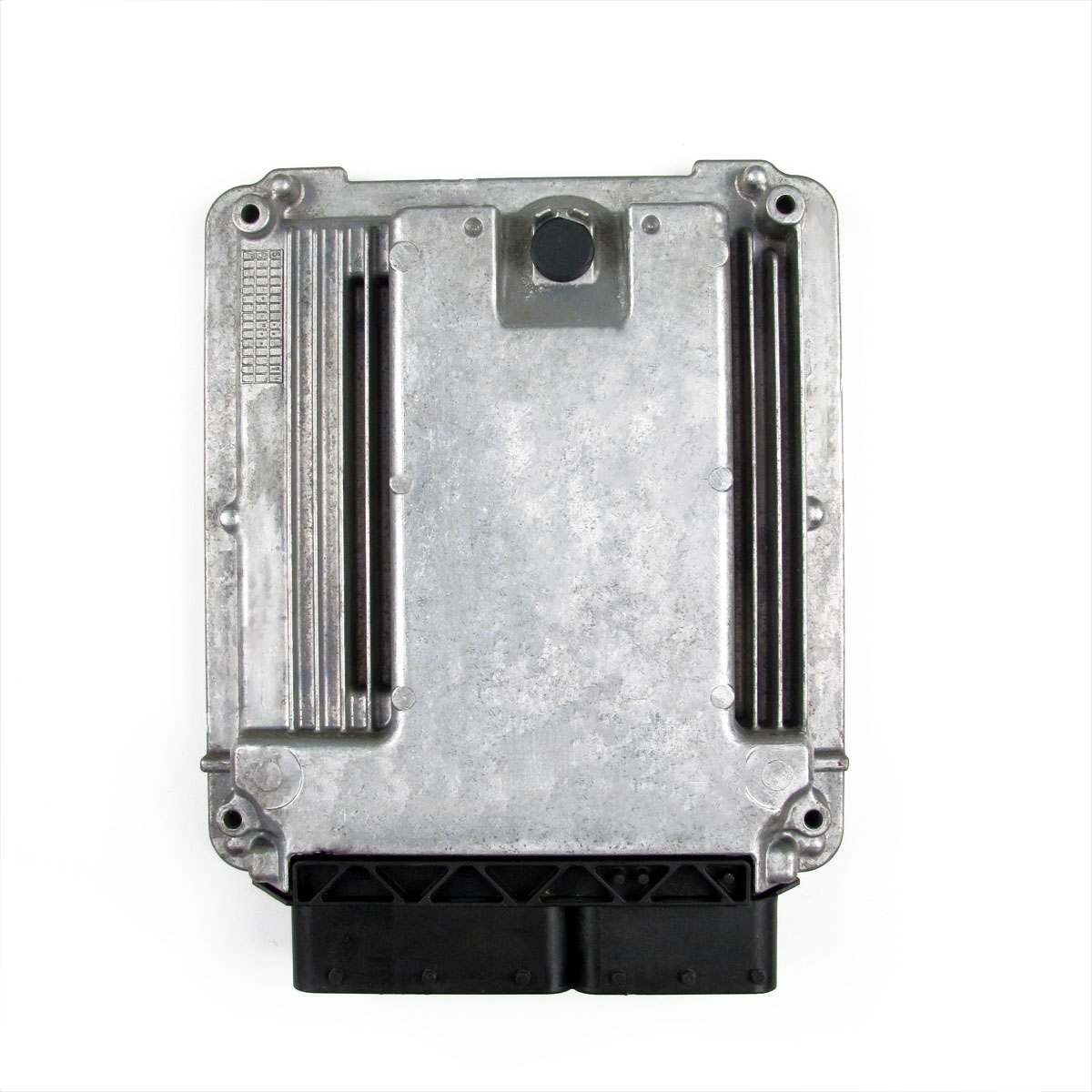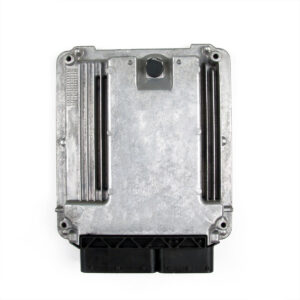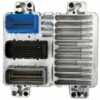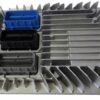Restore Your Vehicle’s Core Performance and Reliability
If you’re dealing with frustrating engine problems like a persistent check engine light, stalling, rough idling, or a no-start condition in your GM vehicle, a failing Engine Control Module (ECM) is often the culprit. As the central computer for your engine, its proper function is non-negotiable. This isn’t just a replacement part; it’s a fully integrated solution. We provide a professionally programmed ECM, flashed with the latest GM software updates specifically for your vehicle’s VIN. This critical step ensures that all engine, fuel, and emissions parameters are set correctly, restoring the performance and efficiency you expect.
Over my 20+ years in automotive diagnostics, I’ve seen countless vehicles sidelined by faulty electronics. A bad ECM can mimic dozens of other problems, leading to wasted time and money on unnecessary repairs. By providing your Vehicle Identification Number (VIN) at checkout, you get a module that is ready for installation, eliminating the need for expensive dealership programming. For the DIY mechanic, this means a straightforward weekend fix. For the professional shop, it means a faster, more profitable repair and a happier customer.
Common Signs of a Failing Engine Computer
- ✔ Check Engine Light is on with communication-related or internal processor fault codes (e.g., P0601, P0606, U0100).
- ✔ The engine cranks but refuses to start.
- ✔ Noticeable decrease in fuel economy and engine performance.
- ✔ Unexplained stalling or rough running conditions.
- ✔ Transmission shifting issues or harsh engagement.
- ✔ Failure to pass state emissions testing.
A Technician’s Notebook
I remember a 2011 Cadillac CTS with the 3.6L V6 that came into the bay with a complaint of intermittent stalling at stop lights. The owner had already replaced the throttle body and a camshaft position sensor with no luck. Scans showed no hard codes, just a history of lost communication with the TCM (U0101). After checking the main power and ground circuits to the ECM, which were solid, I suspected an internal failure. On these E39 ECMs, heat cycles can cause microscopic cracks in the circuit board. We installed a VIN-programmed 2010 Allure ECM (the same unit fits the CTS), and the problem was solved instantly. The customer was relieved to finally have a reliable car again, and it reinforced how a pre-programmed module is the most efficient fix.
A Straightforward Guide to Installation
- ✔ Safety First: Disconnect the negative terminal from your vehicle’s battery and secure it away from the post to prevent accidental contact.
- ✔ Locate the ECM: On most of these vehicles (Traverse, Acadia, Enclave, Outlook), the ECM is located behind the cooling fan shroud. On sedans (LaCrosse, Allure, CTS, STS), it’s typically in the engine compartment on the driver’s or passenger’s side. Refer to your vehicle’s service manual for the exact location.
- ✔ Disconnect Connectors: Carefully release the locking tabs on the electrical connectors and pull them straight out from the module. Do not force them. Inspect the pins for any corrosion or damage.
- ✔ Remove the Old Module: Unbolt the old ECM from its mounting bracket. Keep the hardware, as you will need it to install the new unit.
- ✔ Install the New ECM: Mount your new, pre-programmed ECM onto the bracket and secure it with the original hardware.
- ✔ Reconnect Everything: Firmly plug the electrical connectors back into the new module until they click into place. Reconnect the negative battery terminal.
- ✔ Final Steps: Some vehicles may require a security relearn procedure, which typically involves cycling the key. Please refer to your service manual for any vehicle-specific post-installation steps.
Verified Vehicle Compatibility
This module is a direct-fit replacement for the following vehicles equipped with the 3.6L V6 engine. It is compatible with part numbers 19300015, 19300014, 12617230, 12636355, and 12635019.
- 2010-2011 Buick LaCrosse (LH engine compartment)
- 2010 Buick Allure (LH engine compartment)
- 2010-2011 Cadillac CTS (RH front engine compartment)
- 2010-2011 Cadillac STS (RH engine)
- 2010-2011 Chevrolet Camaro
- 2010-2011 Chevrolet Traverse (behind fan shroud)
- 2010-2011 GMC Acadia (behind fan shroud)
- 2010-2011 Buick Enclave (behind fan shroud)
- 2010 Saturn Outlook (behind fan shroud)
IMPORTANT NOTE FOR CAMARO & LACROSSE OWNERS: For a true plug-and-play installation on these two models, we require your original ECM to transfer the immobilizer data. We will contact you with shipping instructions after your purchase to facilitate this service.
Frequently Asked Questions
Why do you need my VIN?
Your VIN is essential for programming the ECM with the correct software and calibrations for your vehicle’s specific options, engine, and transmission. This ensures perfect compatibility and performance, just like a module from the dealership.
What is the immobilizer service for the Camaro and LaCrosse?
The Camaro and LaCrosse use a more complex anti-theft (immobilizer) system. To make the new ECM work without extra key programming, we must read the security data from your old module and write it to the new one. This makes the installation truly plug-and-play.
Is this a simple DIY job?
For most of the listed models, yes. If you are comfortable disconnecting a battery and using basic hand tools, you can replace the ECM. The key is our pre-programming service, which handles the complex software side of the job for you.
Will this fix my check engine light?
If the check engine light is caused by an internal ECM failure (codes like P0601-P0606) or communication faults, this module is the correct solution. However, you should always diagnose the codes first to ensure you are not replacing a part for an issue caused by a bad sensor or wiring.
Do I need to do anything after installing the new ECM?
After installation, you should clear any old diagnostic trouble codes with a scan tool. Some vehicles may require a simple key-cycle security relearn procedure, which can be found in your owner’s or service manual. Otherwise, it is ready to go.



